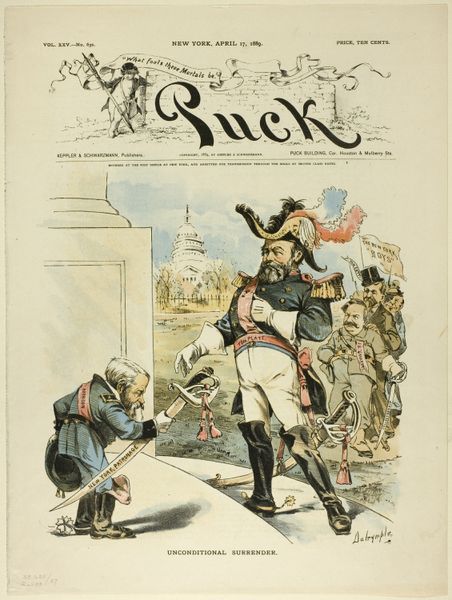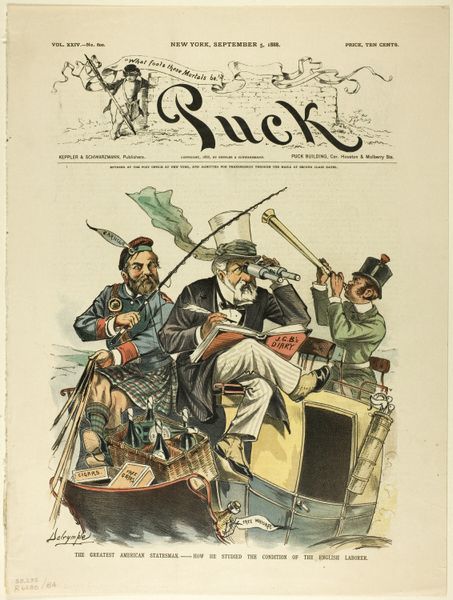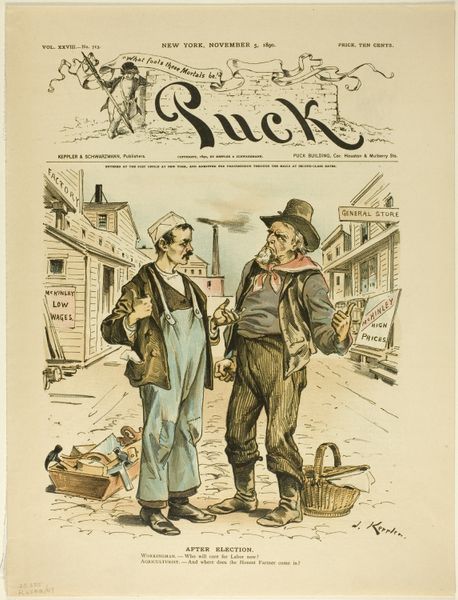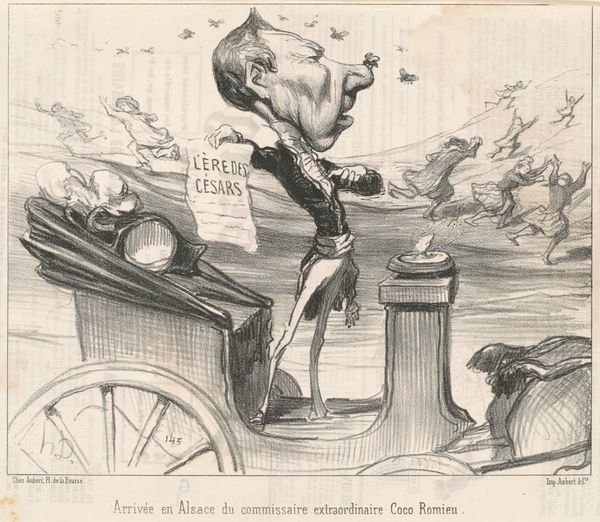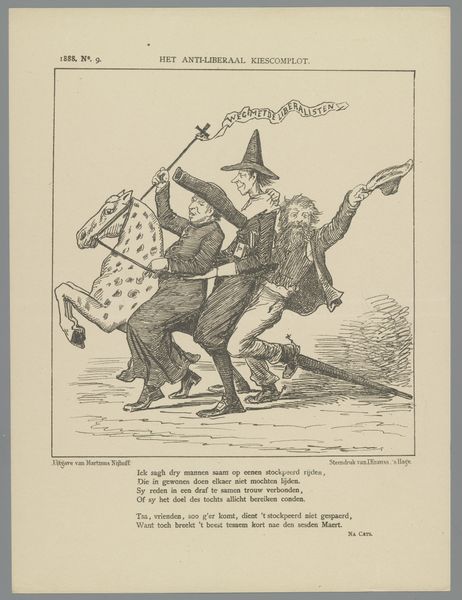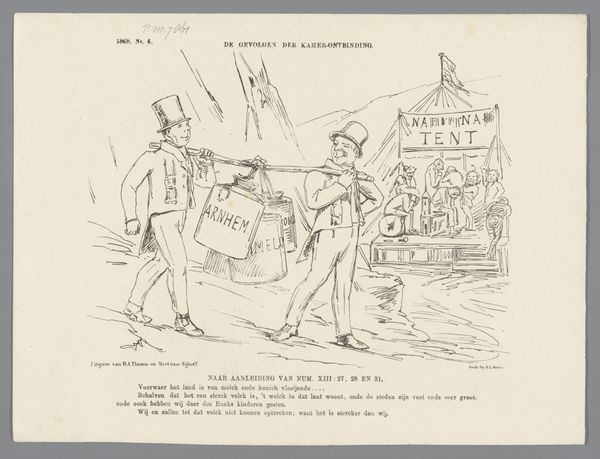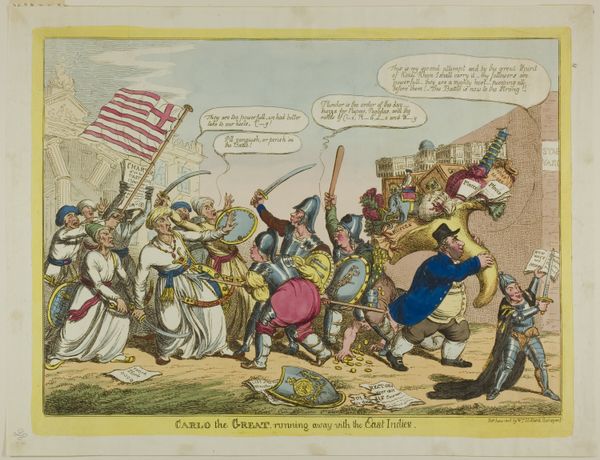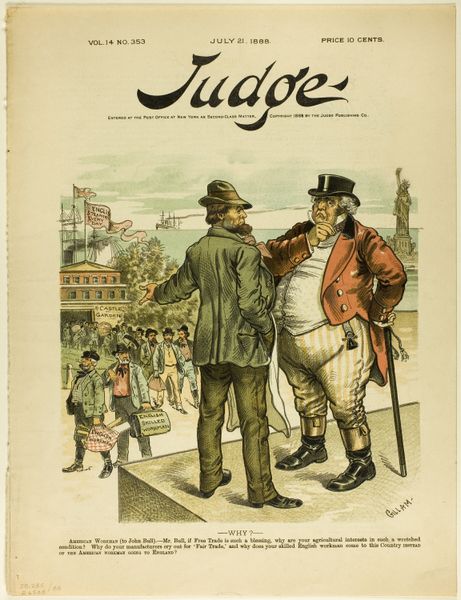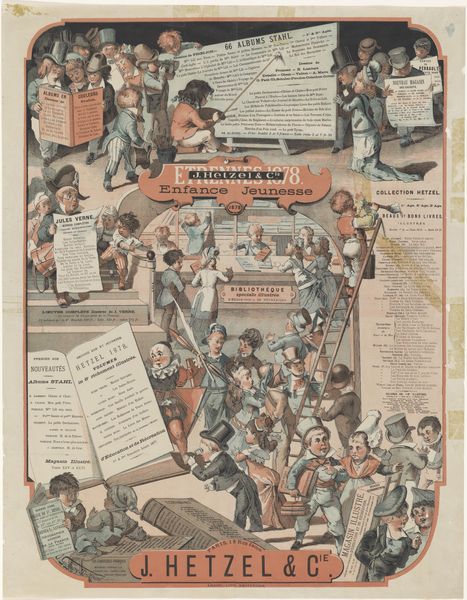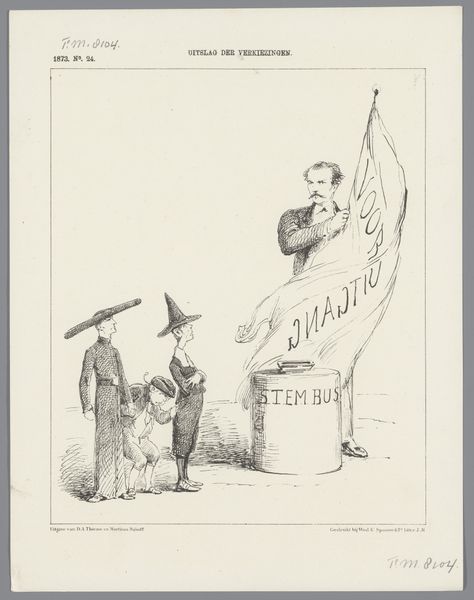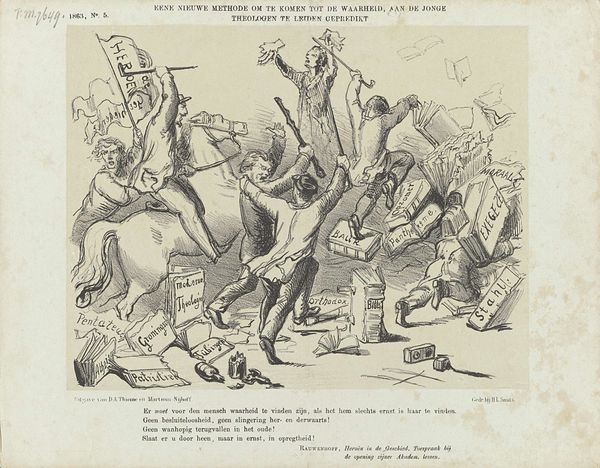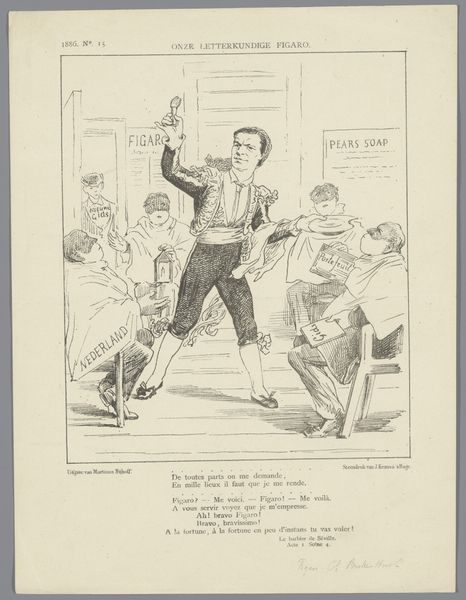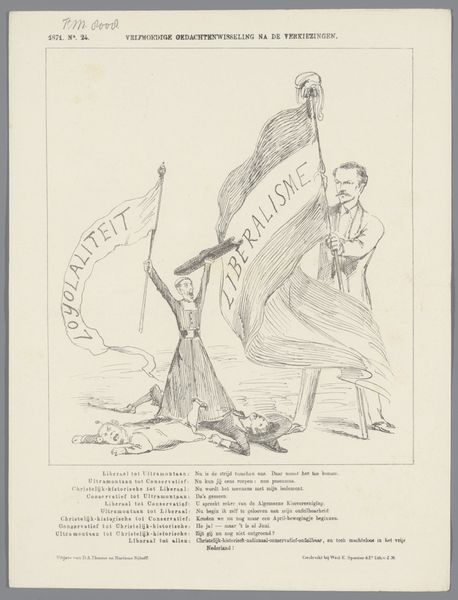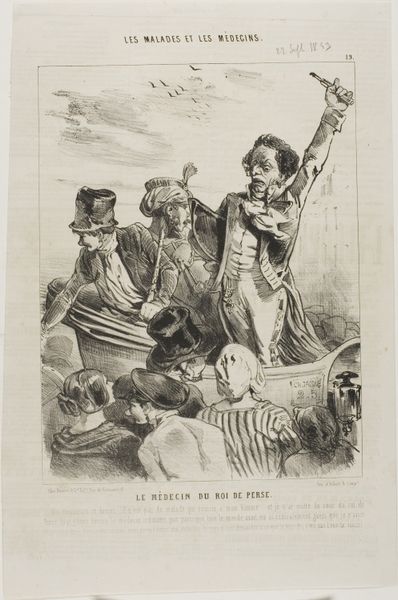
drawing, lithograph, print
#
drawing
#
lithograph
# print
#
caricature
Dimensions: 355 × 268 mm
Copyright: Public Domain
Curator: Welcome. We are looking at "A Useless Barricade," a print and lithograph drawing by Louis Dalrymple, thought to have been created around 1890. It originally appeared in Puck magazine. Editor: Immediately, the dynamic diagonals catch the eye. The imposing figure strides across the image plane, an effect heightened by the linear precision of the lithography. But the mood? One of confident swagger and defiance, bordering on disdain. Curator: It's a political cartoon commenting on the power of Uncle Sam and his inexorable movement towards tariff reform. Look at the smaller figures cowering before him, clinging to their "monopoly savings". The print uses caricature to convey a sharp political message about the influence of wealth. Editor: True, the contrast is striking. Observe the exaggerated features—the piercing gaze, the oversized hands—emphasizing Uncle Sam’s dominance through distortion. The red and pink tones further accentuate his imposing presence against the pale ground and smaller subjects. Curator: And note the satirical details, like the barrels and chests labeled with dollar signs and percentages, alluding to the entrenched financial interests resisting reform. It directly engages with a debate playing out in government offices. Editor: The inscription “A Useless Barricade” undercuts their effort to defend these barrels with their frail figures. Also note the careful hatching of the shadow that suggests they will be overrun, adding visual weight and highlighting areas for increased emotional effect. Curator: "Puck," known for its political satire, played a key role in shaping public opinion through images like this. It served as a powerful form of visual journalism during a time of major political debate. These satirical drawings fueled progressive dialogues. Editor: Certainly. Through its expert execution of medium, from bold lithography to caricature style, “A Useless Barricade” successfully utilizes principles of design for its central statement of power and inevitable change. Curator: Considering it was published in a widely distributed magazine, it had a significant impact. By scrutinizing political subjects of the time, these works invite us to reconsider not just history but also today’s political visuals. Editor: Absolutely. We started by looking at forms of this visual commentary, and now our understanding extends much beyond aesthetics to grasp the importance of our shared social past.
Comments
No comments
Be the first to comment and join the conversation on the ultimate creative platform.
